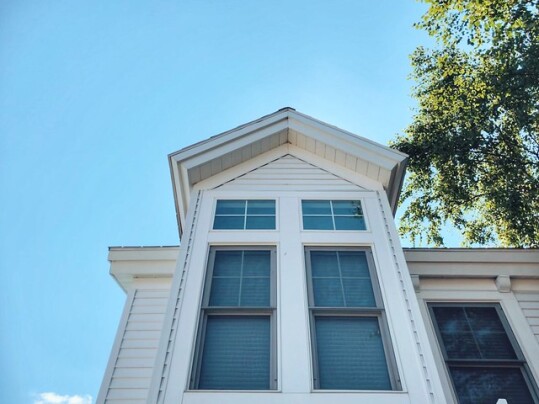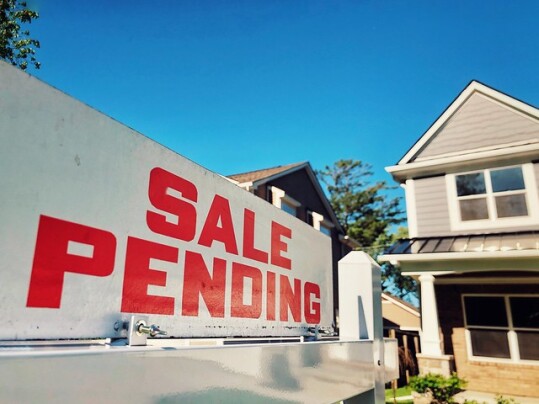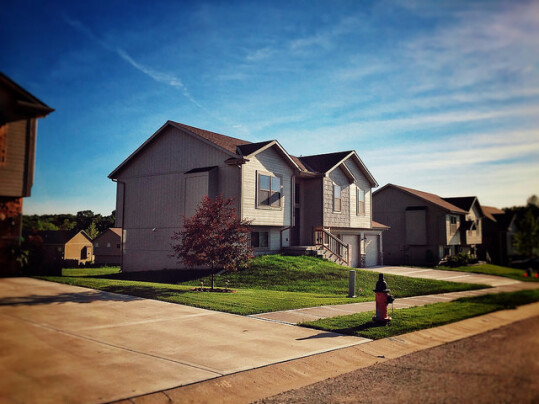There’s a reason it’s called a seller’s market. When there are too few homes for sale and plenty of buyers, home seller’s set the terms. Take last year, for example. In the frenzy of last year’s housing market, home buyers were waiving inspections and even buying homes sight unseen. Home sellers didn’t have to negotiate to get a buyer to sign a contract, they could simply wait for a better offer. This year, though, things may be changing. According to the National Association of Realtors’ consumer website, recent buyers have been having success negotiating terms with home sellers. Survey results show the number of buyers asking for repairs based on the inspection has more than doubled over the past 12 months, while the number of sellers refusing to make repairs has dropped to zero. Additionally, the share of sellers who have sold below their asking price has risen from 18 percent in February to 31 percent in July. George Ratiu, manager of economic research for the NAR’s website, says things are getting back to normal. “Our survey shows that the overheated housing market of the past two years, which predominantly favored sellers, is beginning to regain a sense of normalcy, which is welcome news for home buyers,” Ratiu said. (source)
Archive for August 2022
Home Buyers Regain Some Negotiating Power
Typical Monthly Mortgage Payment Gets Smaller
Your mortgage payment is bound to be among your biggest monthly bills. So it’s natural to want it to be as affordable as possible. Which is why the Mortgage Bankers Association’s most recent Purchase Applications Payment Index is encouraging news for prospective home buyers. The index – which tracks the typical monthly mortgage payment based on recent home purchase loan applications – found the national median payment applied for by applicants fell in July, dropping to $1,844 from $1,893 the month before. Edward Seiler, MBA’s associate vice president, housing economics, and executive director, Research Institute for Housing America, says the improvement was modest but widespread. “Affordability conditions improved modestly in most of the country in July, as slightly lower mortgage rates and a decrease in the median loan amount led to the typical home buyer’s mortgage payment falling $49 from June,” Seiler said. The improvement, though small, is a welcome change for buyers after recent increases to home prices and mortgage rates. (source)
Contract Signings Fall But Less Than Month Before
Measuring the number of contracts to buy homes signed in a given month will give you a good idea of what the following month’s home sales numbers will look like. After all, signing a contract to buy is the first step in a closing process that usually lasts a few weeks. Which means a signed contract today will be a closed home sale in about a month. It also means The National Association of Realtors’ Pending Home Sales Index can give us an early insight into what’s happening in the housing market now. The NAR’s most recent release says contract signings fell 1 percent in July. But while the decline indicates the market is still slowing, the rate of decline improved greatly from the previous month, according to the new numbers. In fact, the previous month’s index saw an 8.6 percent drop. Lawrence Yun, NAR’s chief economist, says the market should soon begin to stabilize. “Home prices are still rising by double-digit percentages year-over-year, but annual price appreciation should moderate to the typical rate of 5 percent by the end of this year and into 2023,” Yun said. “With mortgage rates expected to stabilize … alongside steady job creation, home sales should start to rise by early next year.” (source)
Housing Market Softens As Economy Shifts
Fannie Mae’s Economic and Strategic Research Group releases a forecast each month detailing their outlook for the economy and housing market in the months ahead. The group looks at things like consumer spending, GDP growth, home sales, and mortgage originations and predicts where they’re headed through the end of this year. Their August release contains few surprises for anyone thinking about buying or selling a house. In short, it says the housing market has been softening due to rapid home price increases and the recent spike in mortgage rates. Fannie Mae believes the shift in affordability conditions will cause home sales to fall 16.2 percent this year from the year before. Doug Duncan, Fannie Mae’s senior vice president and chief economist, says the broader economy, and the Fed’s response to it, will determine how quickly things level off. “The question for many market observers is how quickly, and with home much additional tightening, the core inflation rate will come down to the Fed’s preferred target,” Duncan said. “In our view, the labor market’s continued strength suggests that the Fed is likely to maintain its aggressive posture through the end of the year.” (source)
Mortgage Demand Falls Week Over Week
According to the Mortgage Bankers Association’s Weekly Applications Survey, average mortgage rates increased last week across all loan categories, including 30-year fixed-rate loans with both conforming and jumbo balances, loans backed by the Federal Housing Administration, and 15-year fixed-rate loans. As a result, home purchase activity slowed, dropping 1 percent from the week before. Demand for home purchase loans is now 21 percent lower than last year at the same time. Joel Kan, MBA’s associate vice president of economic and industry forecasting, says last week’s numbers may indicate a shift in who’s buying right now. “Last week’s purchase results varied, with conventional applications declining 2 percent and government applications increasing 4 percent, which is potentially a sign of more first-time home buyer activity,” Kan said. “The average purchase loan size continued to trend lower, as purchase activity at the high end of the market is weakening.” The MBA’s weekly survey has been conducted since 1990 and covers 75 percent of all retail residential mortgage applications. (source)
Market For Smaller Homes Remains Competitive
The housing market has gotten a little easier for buyers lately. Listings are lasting longer and home-price increases have slowed. It’s definitely still a seller’s market, but buyers have it easier than they did last year at this time. Of course, how much easier depends on where and what you’re looking to buy. Conditions can vary from one neighborhood to the next. They can also vary depending on price range. In fact, according to one recent report, if you’re shopping for something smaller and more affordable, you’re going to find more competition among buyers than you would if you were shopping for something larger and more expensive. Why? The answer is inventory. While the number of homes for sale has been growing lately, the inventory of affordable homes has been growing at a slower rate than the inventory of higher priced homes. At the high end of the market, inventory is up 19.3 percent from where it was last year. The inventory of affordable homes, on the other hand, grew just 10.4 percent over the past 12 months. In other words, buyers looking for something more affordable should still prepare for a competitive market, even if it’s slower than last year’s. (source)
Typical U.S. Home Value Sees Slight Decline
Home values have been rising steadily for years now. The pandemic caused them to accelerate, but it’s not as though they just start increasing two years ago. In fact, according to one monthly measure, there hasn’t been a month when they haven’t increased since 2012. There were times, of course, when the increases would slow, but no month in the past 10 years saw the typical home value decline month over month. It did in July, though, falling 0.1 percent from the month before. The typical home, according to the numbers, now costs $357,107 – $366 less than it did in June. The improvement was small, but still encouraging for buyers shopping for a home in a tight market. It also follows a trend. The typical home value has been slowing for a few months now, after peaking in April. Month-over-month growth was near 2 percent earlier in the year and had slowed to 0.8 percent by June. It’s just another sign that the market is rebalancing, with buyer demand slower than before and the number of available homes rising. (source)







